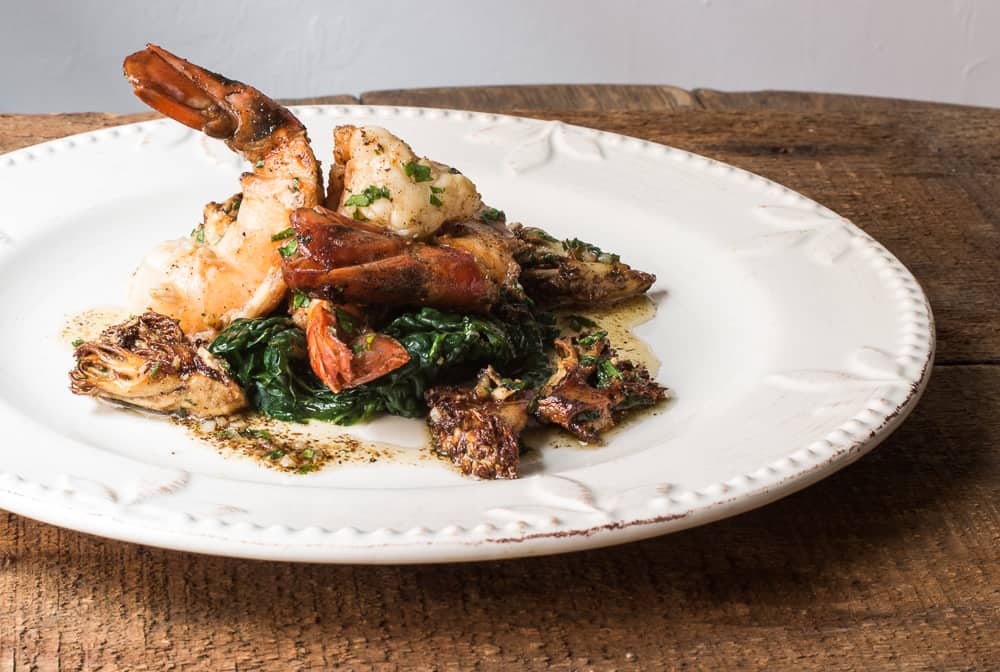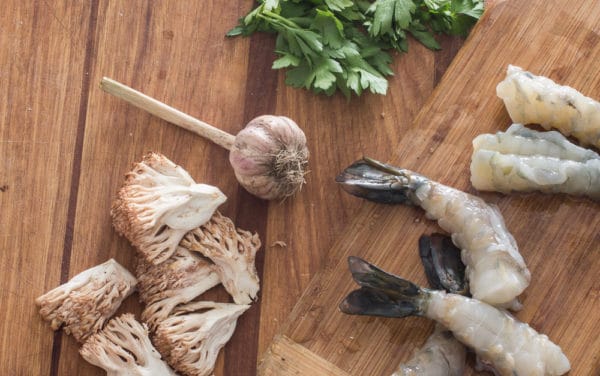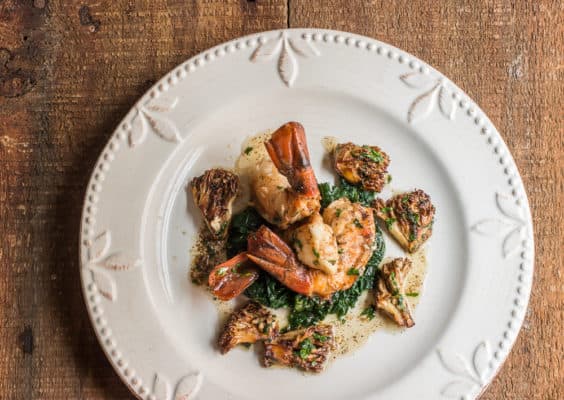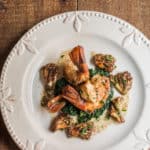
I've eaten plenty of other coral mushrooms, some purple ones and a few different yellows, if I remember, but the Ramaria botrytis are the best I have had, no question. I've also never had a problem with any of them, yet. For more interesting tidbits about edibility of corals, see the article on them by David Arora I shared a few years ago.

Ramaria botrytis, they're nearly pink young, but they discolor quickly.
The rest of the dish could be whatever, really, but the goal is seafood, with a mushroom that looks like it should be growing in the sea. The greens are there to soak up the pan juices, but they could just as easily be spinach, or another green like lambs quarter, nettles, etc, the fun stuff. Maybe it can serve as some inspiration the next time you find a few nice Ramaria.

Note the hardneck garlic, that's what you want for this, in a perfect world, that and Italian parsley.
Oh, one more thing, if you like to make pan sauces, or, if you would like to practice pan sauces, this sort of simple deglaze-and-spoon-it-on method is a great intro, as the sauce is meant to be broken, meaning you don't have to worry about it having a creamy texture.
Seared Prawns with Coral Mushrooms, Lacinato Kale and Garlic Butter
Ingredients
- 6 large prawns u-10 or u-12 are a fine size
- 4 oz lacinato kale stems removed, leaves cut into 2 inch squares
- 4 oz fresh ramaria cleaned, washed and dried if needed
- 2 tablespoons unsalted butter
- 2 tablespoons cooking oil
- Kosher salt and fresh ground black pepper
- Fresh squeezed lemon juice to taste
- Fresh chopped Italian parsley a pinch
- ½ teaspoon high quality fresh garlic finely chopped
- ¼ cup dry white wine
Instructions
- Break the coral mushroom into medium-sized pieces about the size of a walnut. If your coral mushroom is large, and clean, you might consider cooking it as a steak or a big hunk, by searing it in a pan and finishing in a hot oven. Heat the oil in a saute pan, then quickly sesaon the shrimp with salt and pepper just before they go in the pan. Do not move the shrimp once they're in the pan or they won't sear right.
- When the prawns are golden brown on one side, flip them and add the coral mushrooms to the pan. Continue cooking with the pan on high heat for a minute or two, making sure to caramelize the mushrooms.
- Discard the oil and add the unsalted butter to the pan, and continue cooking on high heat. When the butter is nut-brown, add the garlic, and cook for 1 minute, then remove the pan from the heat and swirl for a moment to deepen the color of the garlic, being careful to let it get dark, but not burn.
- Deglaze the pan with the white wine, reduce by half, double check the seasoning, season lighlty with salt and squeeze of lemon and prepare to plate the dish.
- Meanwhile, wilt the kale simply in a pan with a lid, a touch of butter and salt, without adding any color.
- On two preheated dinner plates, arrange a bed of kale. Arrange 3 shrimp on each plate on top of the kale, then spoon the coral mushrooms and pan juices over the shrimp and around the plate and serve immediately.



DeAnna
Very good. Question: my mushrooms turned purple when cooking, normal? Made me hesitate a bit about what kind of coral mushroom I had. Cooked in an iron skillet.
Alan Bergo
Ah, DeAnna, thanks for commenting, I'm trying to gather more examples of this phemomena and track down the components/cause/particular species that this happens with. The devil is in the details here, and your cast iron skillet is to blame. In the recipe when I state, saute pan, I am referring strictly to stainless steel as it is non-reactive. Cast iron does that to a number of wild foods, but especially a few different types of wild fungus.